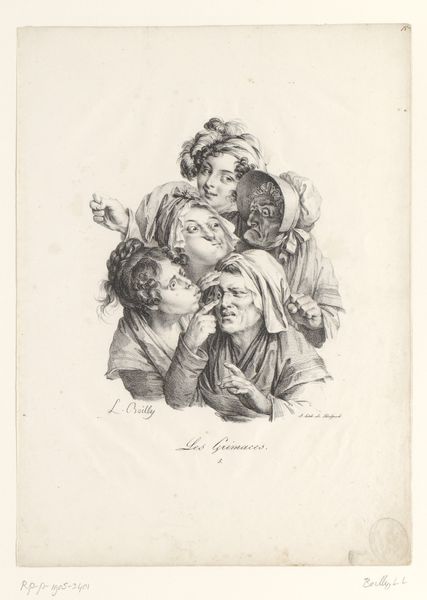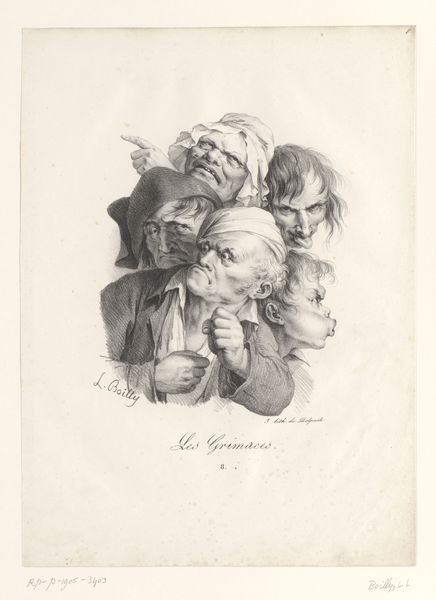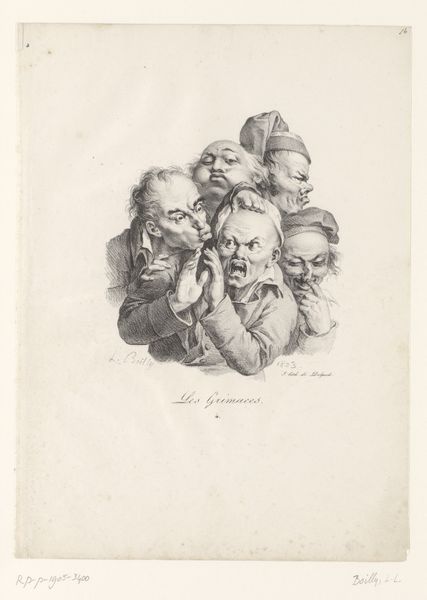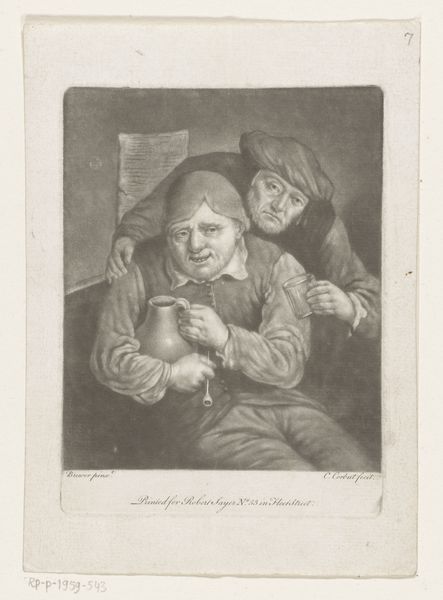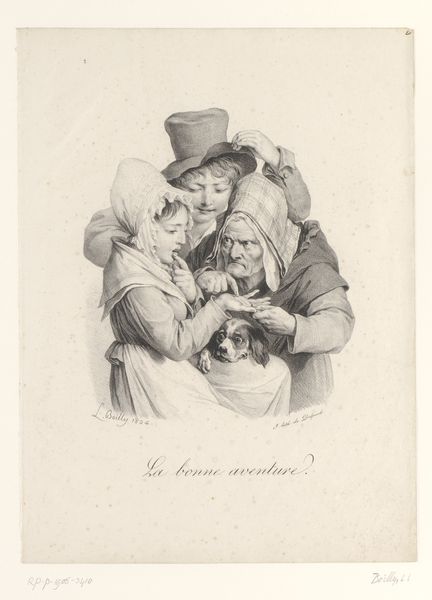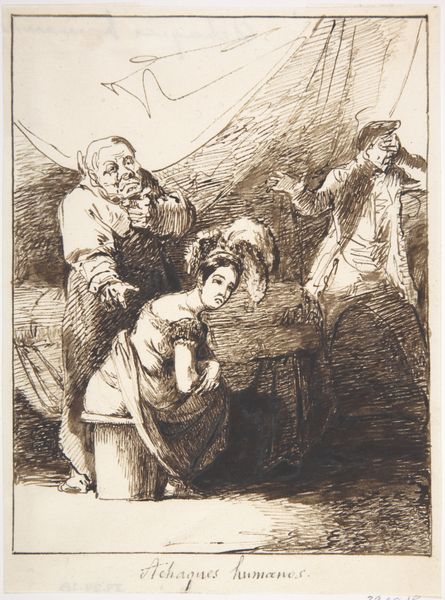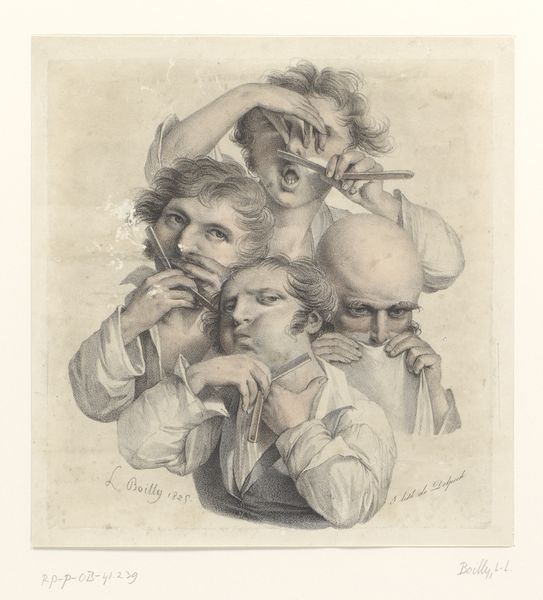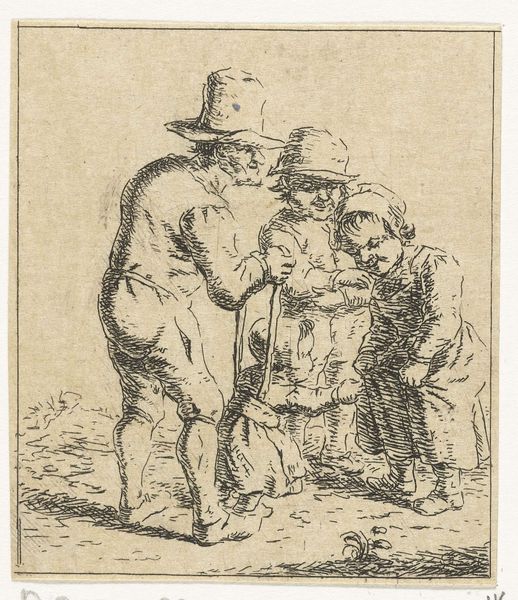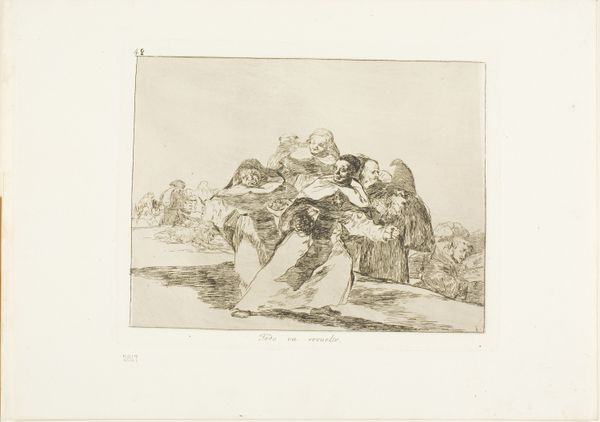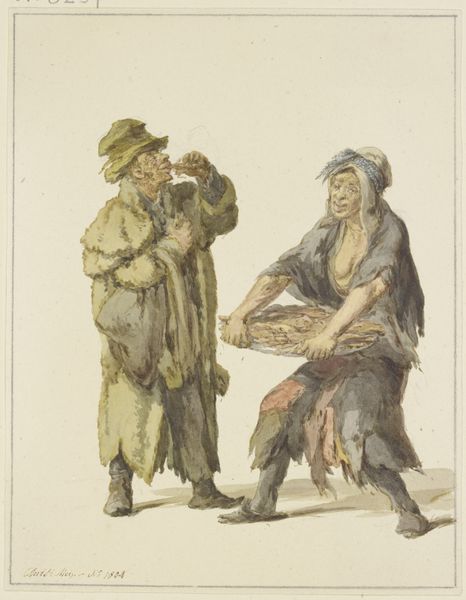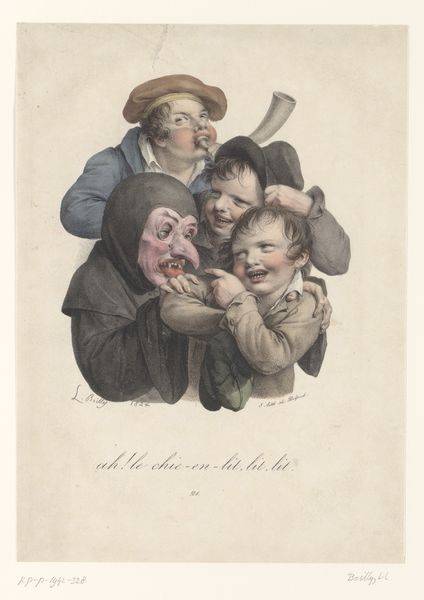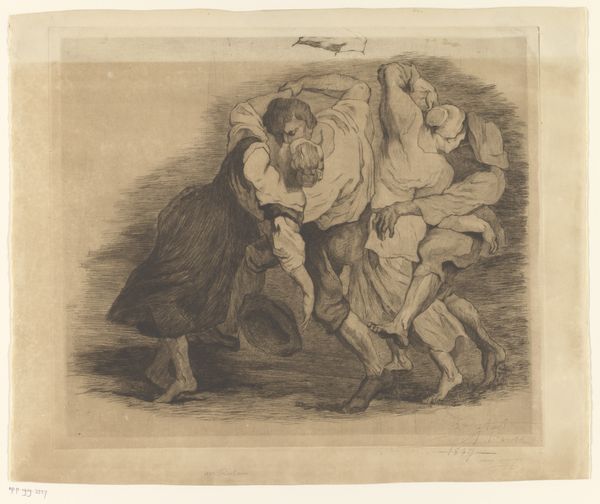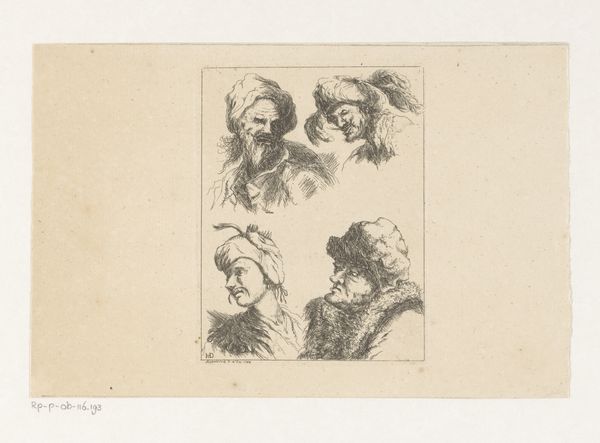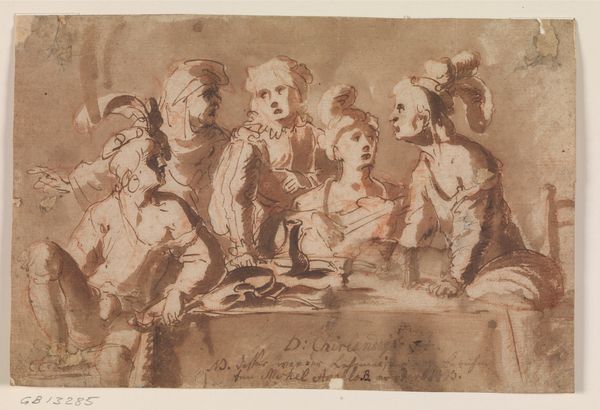
drawing, print
#
portrait
#
drawing
#
neoclacissism
# print
#
caricature
#
genre-painting
Dimensions: Sheet: 14 1/16 x 10 7/16 in. (35.7 x 26.5 cm) Image: 9 1/16 x 7 1/2 in. (23 x 19 cm)
Copyright: Public Domain
Curator: This is Louis Léopold Boilly's "The Beggars," created around 1823. Boilly was quite interested in scenes of everyday life, and here, he presents us with a social commentary through a group portrait in print form. Editor: My first impression? Intriguing, almost unsettling! There’s a huddle of weathered faces; each seems to be pleading or perhaps glaring directly at the viewer. It feels both intimate and accusatory, all at once. Curator: It is interesting that you find the composition unsettling. Boilly's method was deeply rooted in observing societal hierarchies and power dynamics. The artist captures more than individual hardship, by portraying these figures enmeshed. He evokes broader anxieties surrounding social inequality during that era. Consider also that as a print it would have circulated among the moneyed classes as entertainment and cautionary social propaganda. Editor: True! I do see now, a very canny balance between caricature and empathy. What about the materiality though, that very finely rendered line, which in this digital reproduction allows a viewer to experience a subtle but definite tonality within the prints forms. Curator: Precisely, that's the key! The print medium—likely lithography—allows for relatively mass production and distribution. By understanding the scale, one comprehends the reach. Prints had a different, broader social and political influence to other art mediums because it became cheaper and cheaper to create them and easier to disseminate. Boilly's choices point towards engaging with contemporary discourses about poverty and class identity. Editor: Boilly had a canny grasp of physiognomy! All those unique facial details – a slumped brow here, a hardened jawline there. Did his audience, viewing these en masse, react to specific physical 'types'? I almost want to know each person's individual backstory... Curator: Absolutely. That kind of popular engagement was entirely the point. In the nineteenth century many were obsessed with systems of classification. I would say the point of prints like this were precisely designed to promote exactly this sort of discussion among potential audiences. Editor: That brings such a fascinating dimension. I confess, what had felt immediately like observation suddenly is laden with purpose. Curator: Yes, looking beyond the artistic rendering to unpack production, purpose, circulation and audience really enables us to more accurately locate the images role in both its moment and ours.
Comments
No comments
Be the first to comment and join the conversation on the ultimate creative platform.
